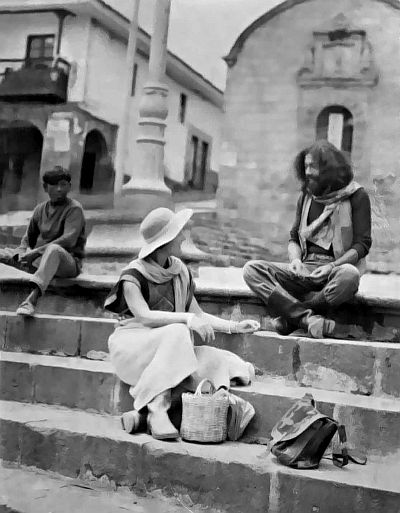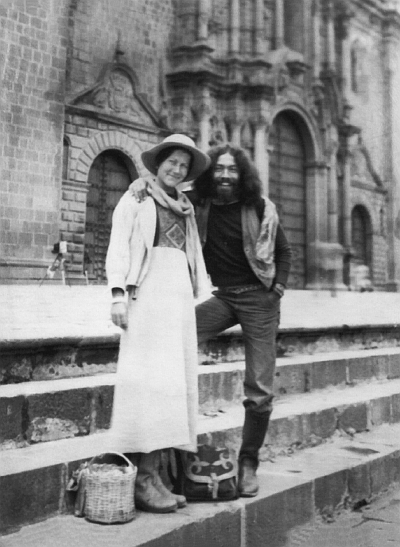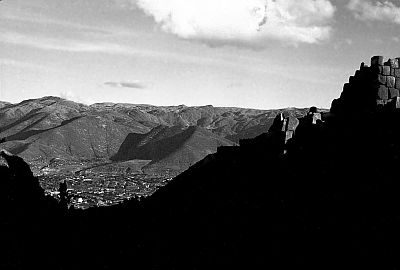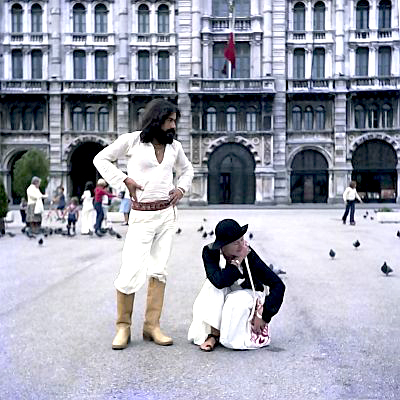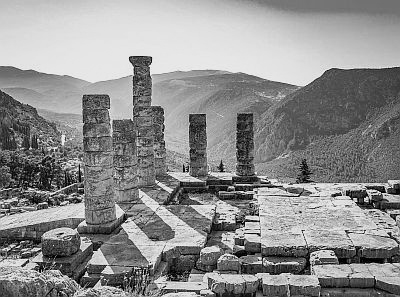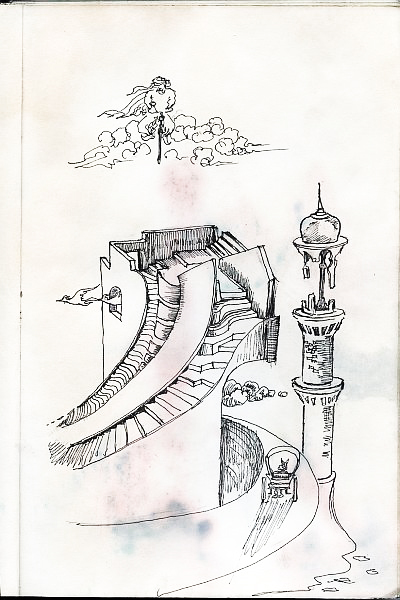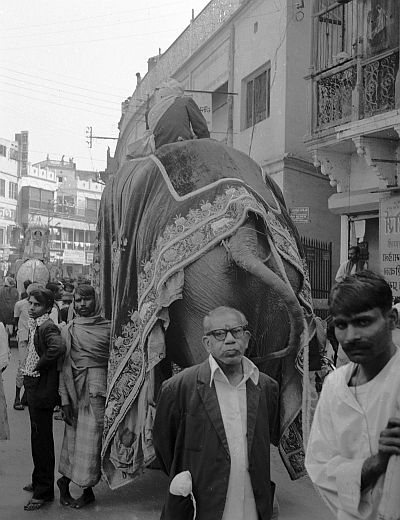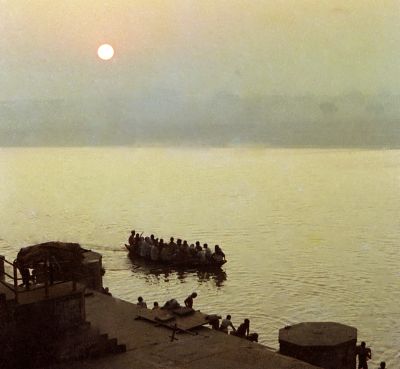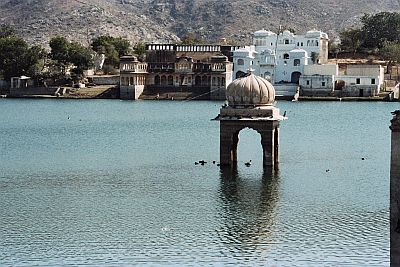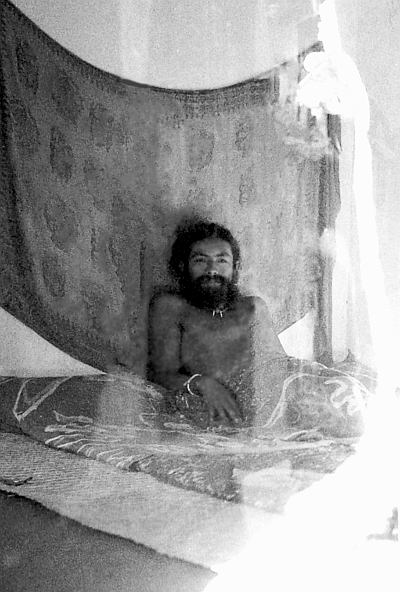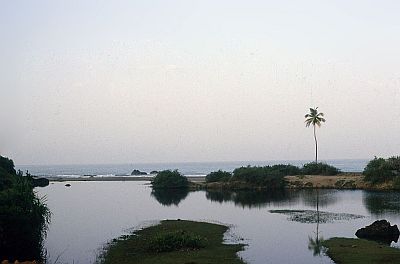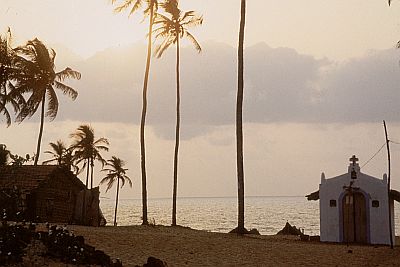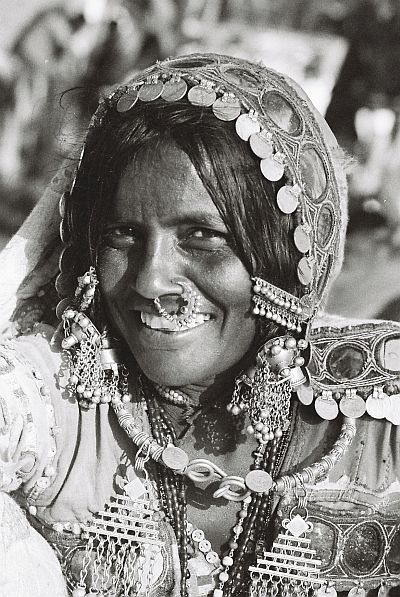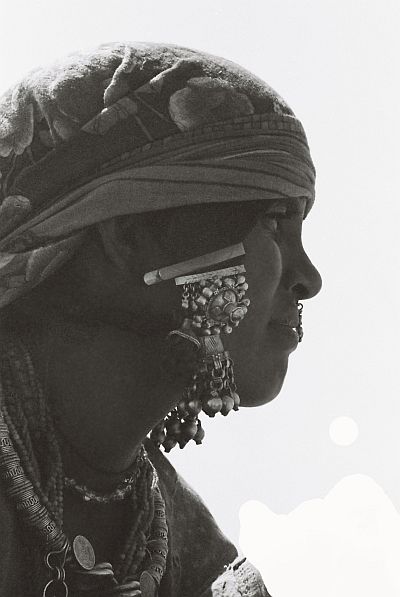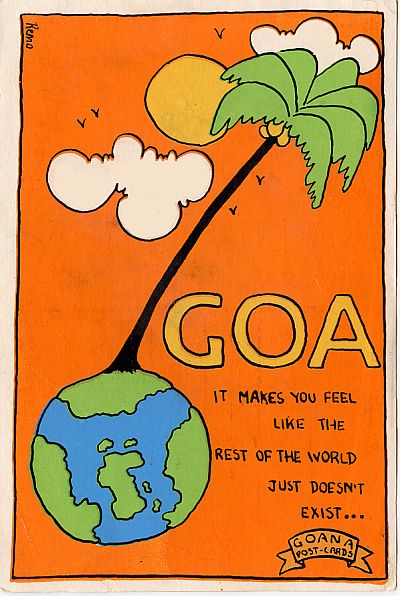Dargeeling (India) was the end of our first stage trip in the Silk Road.
We will leave India now and depart to Nepal.
From Darjeeling we will travel by bus to Kathmandu through the highlands. We will reach the border of Nepal in five hours, but to Kathmandu it would be in 10 or 12 Hours.

Journey to Nirvana
[ From Macchupichu to Machhapuchhare ]- Andes / Himalayas -

On the Road to India and Nepal
[From the Inca Trail to the Hippie Trail]
The flow of travelers through the Hippie Trail stop completely
in 1979, after the Islamic Revolution in Iran, and after the
Soviet Union invasion of Afghanistan. Both in 1979.
PART 1
INDIA
Read more in Wikipedia
Please, click the image to Zoom
Gisela and Vicente in the Plaza de Armas of Cuzco discussing and building up the idea to go to India.
India attracted us very strongly due to its mysticism and cultural exoticism.
The Himalayas and the Andes are opposite sides, antipodes on Earth and two strong magnetic fields, so, we wanted to probe that.
We was part of the counterculture of the 60´s and we wanted to see the world in order to change the world. We was questioning the order that the Western culture presented us.
Our objective was to "Be Here and Now" and explore Hinduism, Buddhism, yoga and meditation, but right in the mystical land as India and Nepal. Anti-establishment revolution was in the air and we wanted to change the world, but we didn´t knew how, so, we changed our own world.
____________________
I`m Peruvian and I came back from San Francisco (USA) to Cuzco in 1973, after many years; and Gisela came from Berlin a year later, with a package of experience and knowledge. We meet in Cuzco and our destiny was scripted by a divine light.
____________________
We were convinced that this trip will reinforce
our mystical search for liberation and enlightenment. Our goal (and Karma) was to escape Maya (Western civilization) a delusional concrete jungle, to attain high consciousness in mystical lands, where humans believe in reincarnation, Nirvana and eternity.
Gisela writing her diary in our home in Cuzco.
(Drawing from my diary)
We were under the effects of Trichoreus Pachanoi - We are opening the Doors of Perception with San Pedro Cactus, in the last day of the year 1975. With the bless of the Gods, peace, love and freedom.
We was in the center of a culture in which people speak Quechua. It was the capital of an Ancient culture, the Inca empire. They worship Pachamama (Mother Earth in Quechua), and revere the father Sun (Inti). We were children of Pachamama.
But, Cuzco was also the Mecca for travelers, adventures, spiritual searchers, anthropologists, philosophers, archaeologists and artists.
In Perú is natural that the native people in the Andes pay tribute to Pachamama in a ritual with coca, maiz, chicha, etc. as a thanks to the Earth and they called "Pago a la Tierra.
The mountains were the House of God (Apu), same as for the Buddhist in the Himalayas.
(Photo by Vicente Segura)
Il Leon de Venezia - Piazza San Marco
Venetian architecture (Gothic, Byzantine and Islamic architecture) it reflects the Venetian trading network with orient; and the orient was what inspired us very strongly to travel to the East.
(Gisela and Vicente in the Piazza San Marco, Venezia).
Let me begin the story by introducing ourselves to a contemporary romanticism that becomes our counter-cultural Renaissance.
Travelling by land to India
The Silk Road
We were planning to start our adventure-trip from Venice to Athens (Greece) by train (via Yugoslavia) and then by bus to Istambul, following the Silk Road to India.
We will use every mean of transportation as buses, trains, ships, etc., (flight only in exceptional cases). We wanted to explore our senses and feel the changes entering other cultures, weather, languages, people, food, smell, sounds, etc., and be profoundly involve into humanity in its highest splendor.
We will use every mean of transportation as buses, trains, ships, etc., (flight only in exceptional cases). We wanted to explore our senses and feel the changes entering other cultures, weather, languages, people, food, smell, sounds, etc., and be profoundly involve into humanity in its highest splendor.
(Gisela and Vicente in front of the Basilica de San Marco,
Venezia)
A lot of love was in the air
(Gisela and Vicente in the Basilic of San Marco-Venezia, before departing to Greece)
The first step
In the beggining of our trip we didn´t use much our photographic camera because we were visually fascinated by entering Asia and visiting their cultures.
Instead, we was very prolific drawing, painting and writting in our diaries.
Drawing of a Doric style pillar from my diary
The Ionic order column in Delphi - The Temple of Apolo
Where the Earth touch the Divine
Where the Earth touch the Divine
Santorini
Santorini is the largest island of a circular archipelago,
and is the remnant of a volcanic caldera, Greece
Kos Island
We visit the house of Hippocrates "Father of Medicine"
and collect this leaves from his garden in Mastichari.
From Kos we could see in the horizon the town of Akyarlar
in Turkey territory. Kos is located at the east of the
Aegean See, near Turkey.
We come from Athens and now we are crossing the Phosphorus Strait to Istambul. We had the sensation that we were entering the Orient to South Asia and Far East. In the Phosphorus we were in the border between the West and the East.
While entering Asia, a great clasical Ottomann music was in the air as a soundtrack for our trip. Frangipani flower and incense sticks also were in the air. We were glamorously astonished by the experience. Lot of life and love was in the air
Wikipedia
The Phosphorus
The Phosphorus or the Strait of Istanbul is a narrow, natural strait that forms part of the continental boundary
between Europe and Asia. It is the world's narrowest strait used for international navigation.
The Bosporus connects the Black Sea with the Sea of Marmara.
As soon as we cross the Phosphorus strait from Greece, a new sensation invade our feelings.
In Istambul, we already enter the East and also we enter a new calendar: goodbye 1976 welcome the Islamic calendar year 1396.
The morning call to pray (Adhan) from a minaret was the last touch (reminds me the Mantras from the music of Paul Horn "Inside" in the Taj Mahal). There was a beautifull strong sweet smell of incense.
We had the final feeling that we were entering a Muslim world. We could hear in the air the classical Turkish music of zither,
tambur, lute, tef (tambourine), darbuka and ney flute.
We feel that we were definitely in another world.
Foto: Wikimedia commons (Public Domain)
The Sultan Ahmed Mosque or The Blue Mosque
(In the Sultanahmet District in Istambul)
The Pudding Shop. This photo was shot in the 60´s
and today is displayed in the wall of the café
The Pudding Shop
The first meeting point of freaks entering Asia.
The Pudding Shop was a cafe-restaurant in the Sultan Ahmet in Istambul, which was mainly the "Mecca" of all travelers coming or going to India. It was the information center were all travellers from all over the world meet here.
Here travelers exchanged information (and, also, there was a bulleting board), about places where to eat and sleep for low-budget, through the route of the Hippie Trial.
Read more here
The Pudding Shop
The first meeting point of freaks entering Asia.
The Pudding Shop was a cafe-restaurant in the Sultan Ahmet in Istambul, which was mainly the "Mecca" of all travelers coming or going to India. It was the information center were all travellers from all over the world meet here.
Here travelers exchanged information (and, also, there was a bulleting board), about places where to eat and sleep for low-budget, through the route of the Hippie Trial.
Read more here
Imam Reza Holy Shrine, Mashhad - Iran
We crossed Iran when the Shah Mohammad Reza Pahlavi was in power. Two years later happens the Islamic Revolution of the Ayatollah Khomeini in 1979.
We were passing through Iran in Nov. 1976 and by January 1978 started the movement that culminated with the revolution in Feb. 1979.
Santur music was in the air and also, perfumed incense.
Representation of ancient Persian culture. (from diary)
Winged lions sphinx with ram's head and griffin's
hind legs from the Palace of Darius the Great at Susa.
Photo from Vicente Segura, and all the rest.
This photo was made with a Zeiss Ikon camera (Second World War),
from the father of Gisela in 1976.
From here on all photos were made with this old camera,
but, good pictures with a format of 6x6, roll film.
Herat
Year 1355: the streets of the old Silk Road city of Afghanistan. We was in Afghanistan before the invasion of the Soviet Union and before the Taliban.
We could hear the morning call for pray in a minaret mosque. Reminds me the music of Paul Horn "Inside".
Nice music in the air (Rubab and Dotar instruments played by Pashtun people) and nice smell on the air as saffron, franjipani flower, patchouli.
September 1976
The Great Bamiyan Buddha, Afghanistan.
This giant Buddha were destroyed by the Taliban
in March 2001 .
From Gisela´s diary
Gisela first impression of India.
She draw in her diary a minimalist visual interpretation of India
Father an son in the outskirts of Taj Mahal
In India we had enter to another time. In the Hindu calendar we were in the year 2033. We live in the future.
This photo was shot from were real people lives
in counter position to the approach of the tourist.
The Taj Mahal it was an ivory-white marble mausoleum on the south bank of the Yamuna river in the Indian city of Agra-Uttar Pradesh, India
From my diary
The Jantra Mantra in New Dehli
It consists of 13 architectural astronomy instruments. The site is one of five built by Maharaja Jai Singh II of Jaipur.
The primary purpose of the observatory was to compile astronomical tables, and to predict the times and movements of the sun, moon and planets.
The Ram Yantra, the Samrat Yantra, the Jaya Prakash Yantra and the Misra Yantra are the distinct instruments of Jantar Mantar.
The Dhamekh Stupa in Sarnath its a Buddhist holy place.
Uttar Pradesh, India
Varanasi
is a major religious hub in India, it is the holiest of the seven sacred cities (Sapta Puri) in Hinduism and Jainism, and played an important role in the development of Buddhism and Ravidassia.
Varanasi also known as Benares, or Kashi, is a city on the bank of the sacred river Ganges, Uttar Pradesh, India.
(View of Varanasi from a boat in the Ganges)
Pushkar
Pushkar is a city in the Ajmer district in the Indian state of Rajasthan. It is situated about 10 km northwest of Ajmer and about 150 kilometres southwest of Jaipur.[1] It is a pilgrimage site for Hindus and Sikhs.
Pushkar is mentioned in the Ramayana, the Mahabharata and the Puranas suggesting its significance in historical and religious tradition of Hinduism.
Pushkar has many temples, with around 400 temples facing the banks of the lake.
The Rangji Temple
This temple is devoted to Lord Rangji who is an incarnation of
Lord Vishnu. Different cultures in its architecture: Dravidian,
the Rajputana and the Mughal styles.
LINGAM / YONI
A Lingam is a phallic representation of god Shiva
and Yoni is an aniconic representation of goddess Shakti in Hinduism.
A Shivaist is making Puja (worshiping) to a Lingam/Yoni representation of Shiva and Parvati.
Pushkar.
From my diary
Poverty and starvation in India
My eyes couldn't believe the degree of poverty and starvation occurring in the streets of India because of the over population. Their faith was Karma and Nirvana.
India ended 1977 with a population of 652,408,776 people, which represents an increase of 14,778,689 people compared to 1976.
Well, today, in the year 2019 the population is 1´369,967,121
Photo looking down from our big boat going to Goa
to a small boat down there with local Bombay people.
The Aguada Fort, a seventeenth-century Portugues fort
overlooking the Arabian Sea.
We entered the bay of Goa
Arriving to Panjim, Goa, in a sunrise morning,
after a whole
night trip in a ship from Bombay
Panaji (or Panjim) is the state's capital, while Vasco da Gama is its largest city. The historic city of Margao still exhibits the cultural influence of the Portuguese, who first landed in the early 16th century as merchants and conquered it soon thereafter. Goa is a former Portuguese province; the Portuguese overseas territory of Portuguese India existed for about 450 years until it was annexed by India in 1961
We rent our first home in Anjuna beach, after been only in hotels and hostals, all this time.
Goa-India
Extract of Gisela diary writing The Upanishad,
a Vedic Sanskrit texts (oldest scriptures of
Hinduism) that deal with meditation, philosophy, and
ontological knowledge
(mantras, benedictions, rituals and ceremonies).
Vicente is enjoying a natural shower in the garden
of our home.
The sources of water come from a well.
Goa-India
*******************************************************
After awhile in Goa we continued our trip from the Arabian Sea
across India to the Gulf of Bengal, trough the south of India:
BANGALORE, TAMIL NADU:Tiruchirappalli, Pondicherry, Madras,
CALCUTTA, DARGEELING, Kalimpong,
before we embark to Nepal-Kathmandu.
After awhile in Goa we continued our trip from the Arabian Sea
across India to the Gulf of Bengal, trough the south of India:
BANGALORE, TAMIL NADU:Tiruchirappalli, Pondicherry, Madras,
CALCUTTA, DARGEELING, Kalimpong,
before we embark to Nepal-Kathmandu.
Aurosville
In Pondichery we visit Aurosville or city of the future,
a Sri Aurosbindo utopia.

"The world´s senseless beauty mirrors God delight.
That raptures smile in secret everywhere."
Sri Aurosbindo
The Pancha Rathas in Mamallapuram (Mahabalipuram), 58 kilometres south of Chennai (Madras) -Tamil Nadu
The temples of Mamallapuram are portraying events described in the Mahabharata.
These monuments carved out of rock are dated to the 7th and 8th centuries: rathas (temples in the form of chariots), mandapas (cave sanctuaries), giant open-air rock reliefs such as the famous Descent of the Ganges, and the Shore Temple dedicated to Shiva, Durga, Vishnu, Krishna and others.
The complex is part of the UNESCO World Heritage site.
Read more
Each of the five monuments in the Pancha Rathas complex resembles a chariot (ratha), and each is carved over a single, long stone or monolith, of granite which slopes in north-south direction with a slight incline. The purpose of their construction is not known as the structures were not completed. Work on these five rathas was discontinued following the death of Narasimha Varman in 668 AD.
Mamallapuram (Mahabalipuram), Madras (Chennai) Tamil Nadu, India
Gisela in the Trimurti Cave Temple.
This Shiva Temple depicts the Hindu trinity:
Brahma (left), Shiva (centre) and Vishnu (right)
Mamallapuram (Mahabalipuram),
Madras (Chennai) Tamil Nadu, India
In Calcutta (now Kolkata), the capital of West Bengal,
we took the Darjeeling Himalayan Railway to its highest point in
Ghoom-Darjeeling (the highest railway station in India).
Darjeeling is a city in the Indian state of West Bengal and it´s sorrounded by Nepal, Sikkim and Bhutan. Many Tibetans refugees settle down here after the Dalai Lama left Potala in Lhasa in the year of 1959. It is located in the Lesser Himalayas at an elevation of 2,042.2 m. It is noted for its tea industry, its views of Kangchenjunga, the world's third-highest mountain, and the Darjeeling Himalayan Railway, a UNESCO World Heritage.

